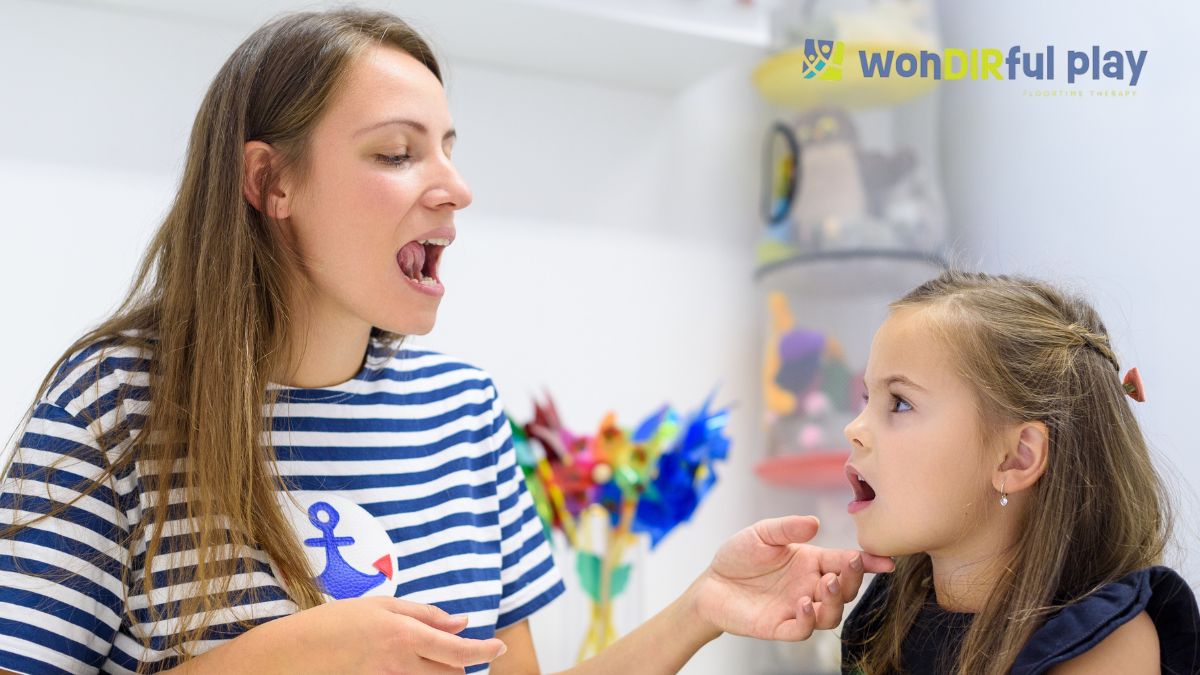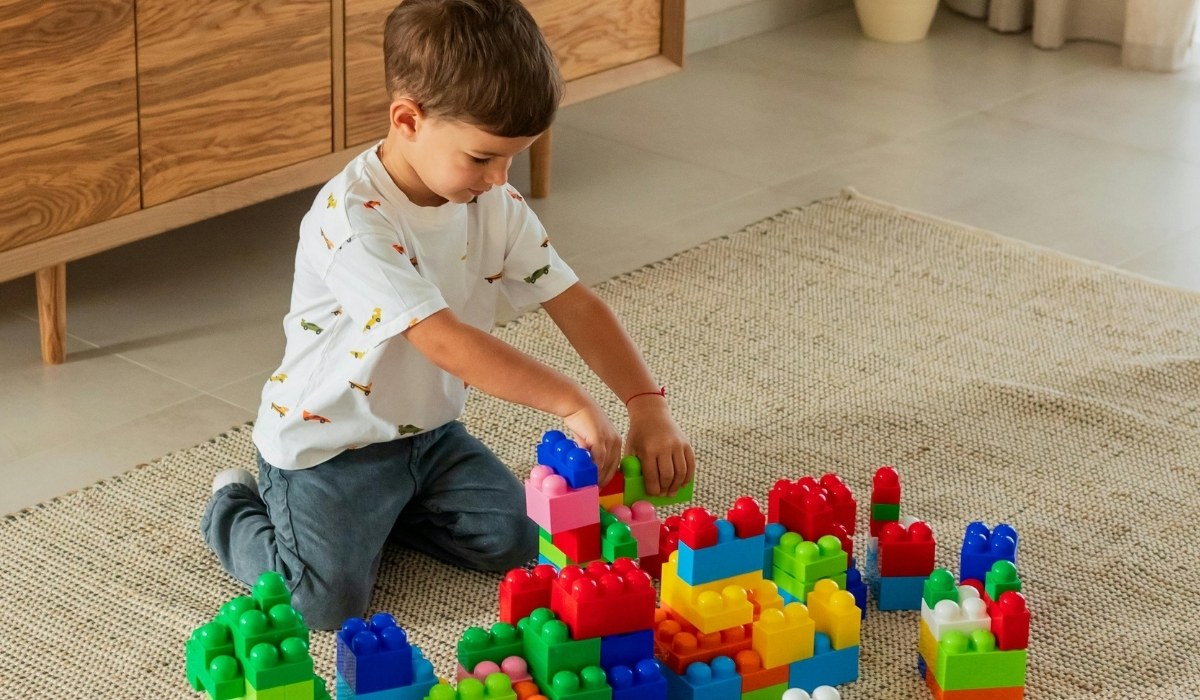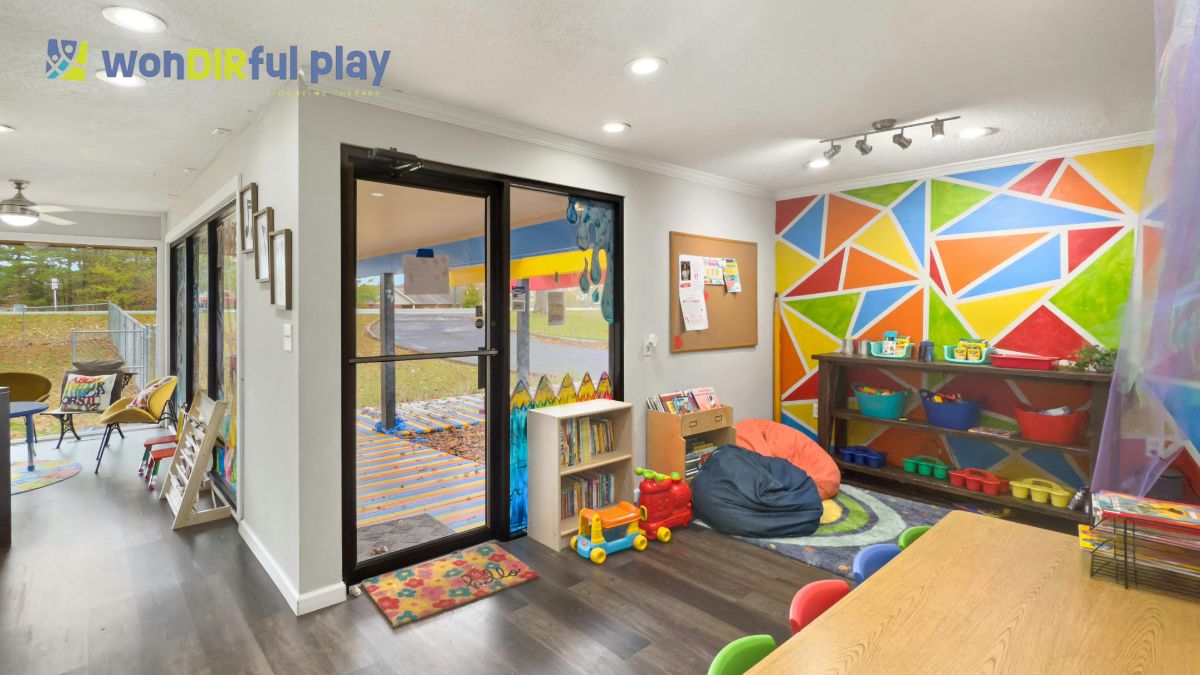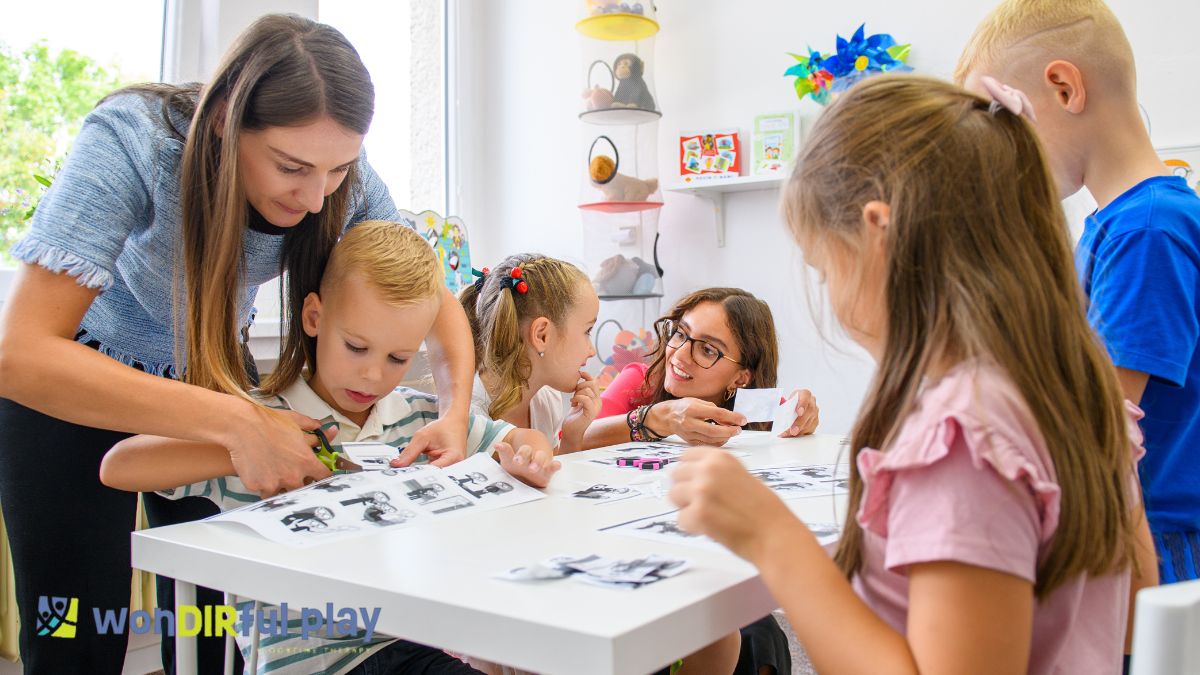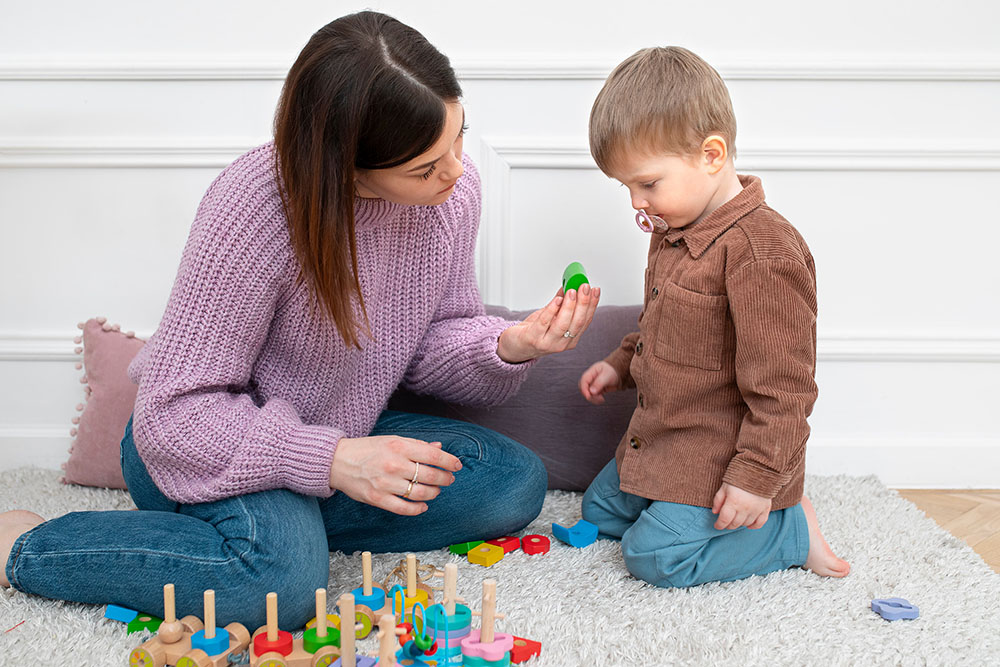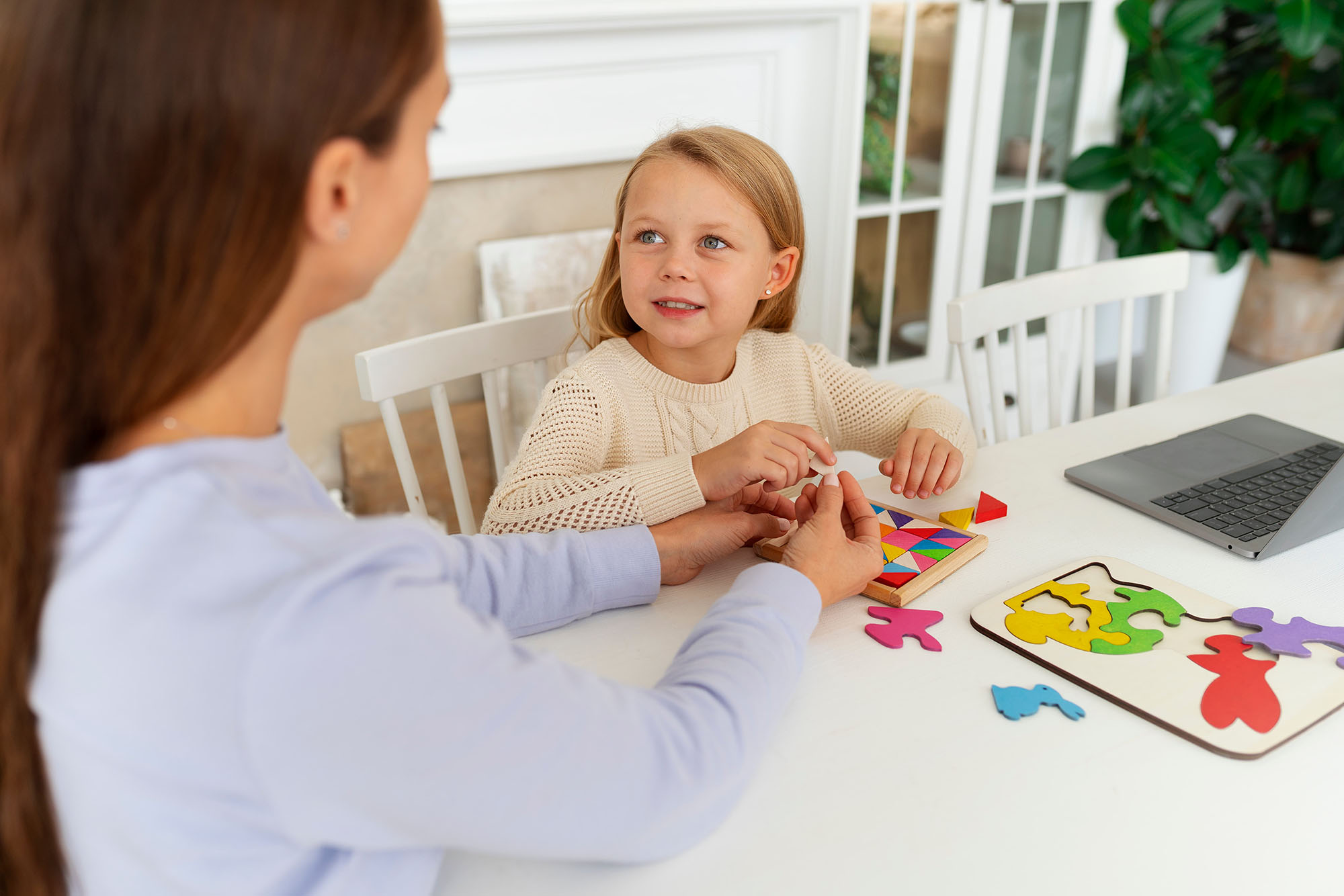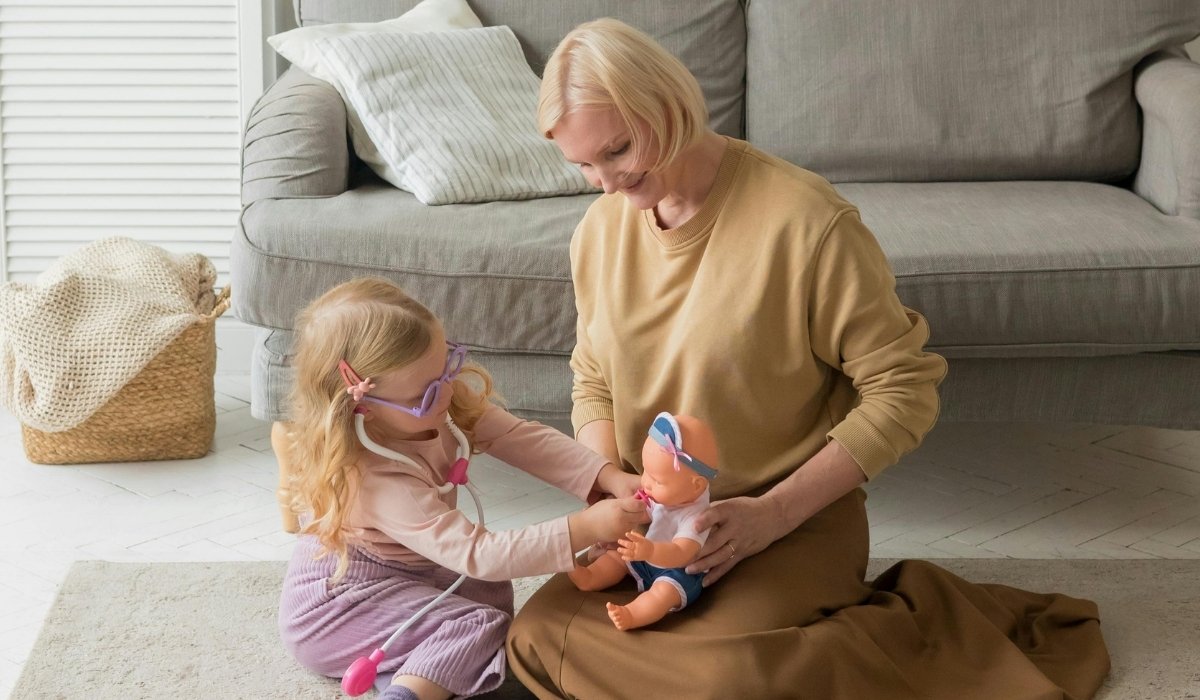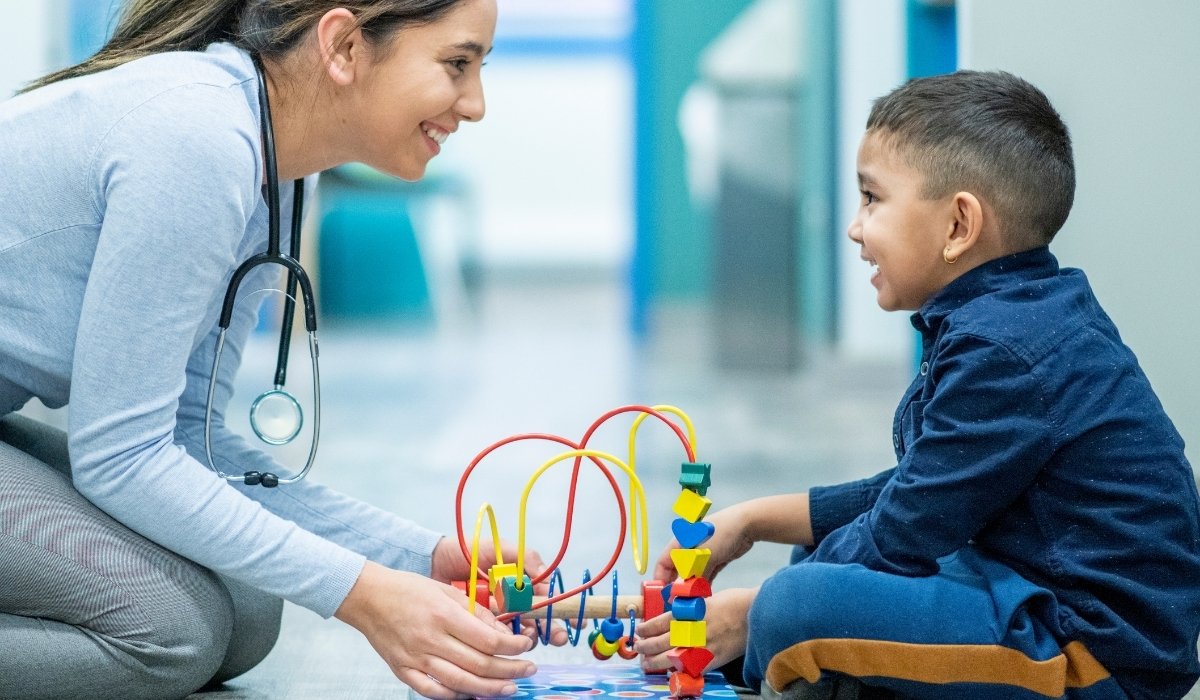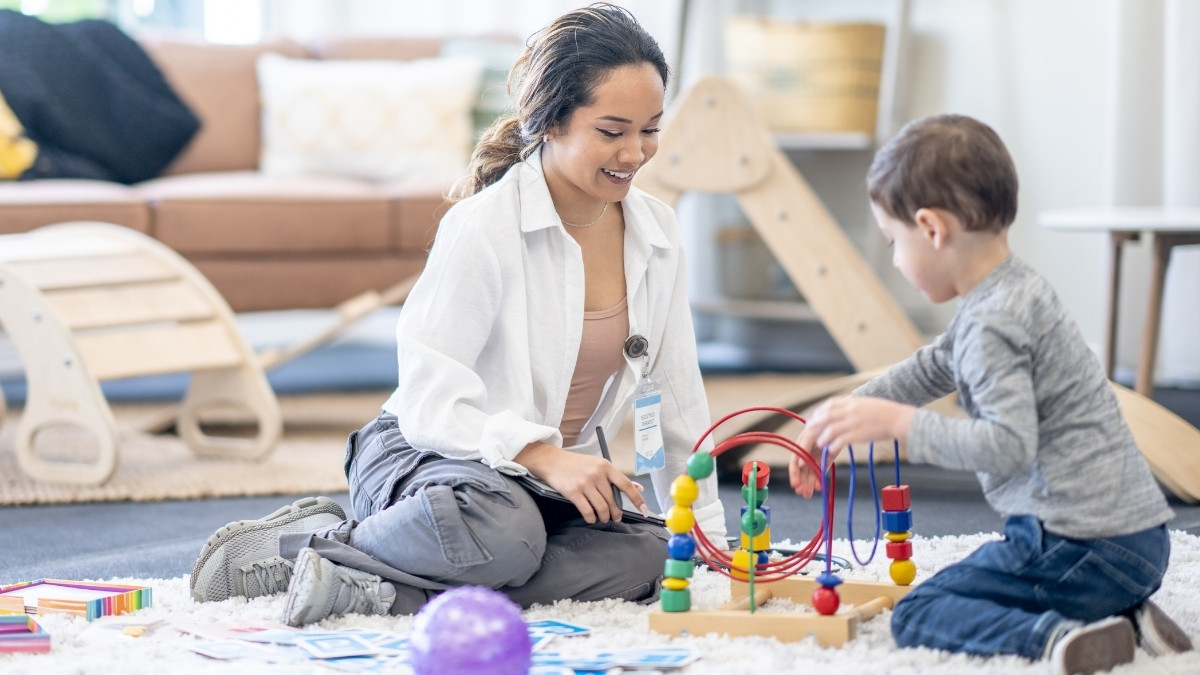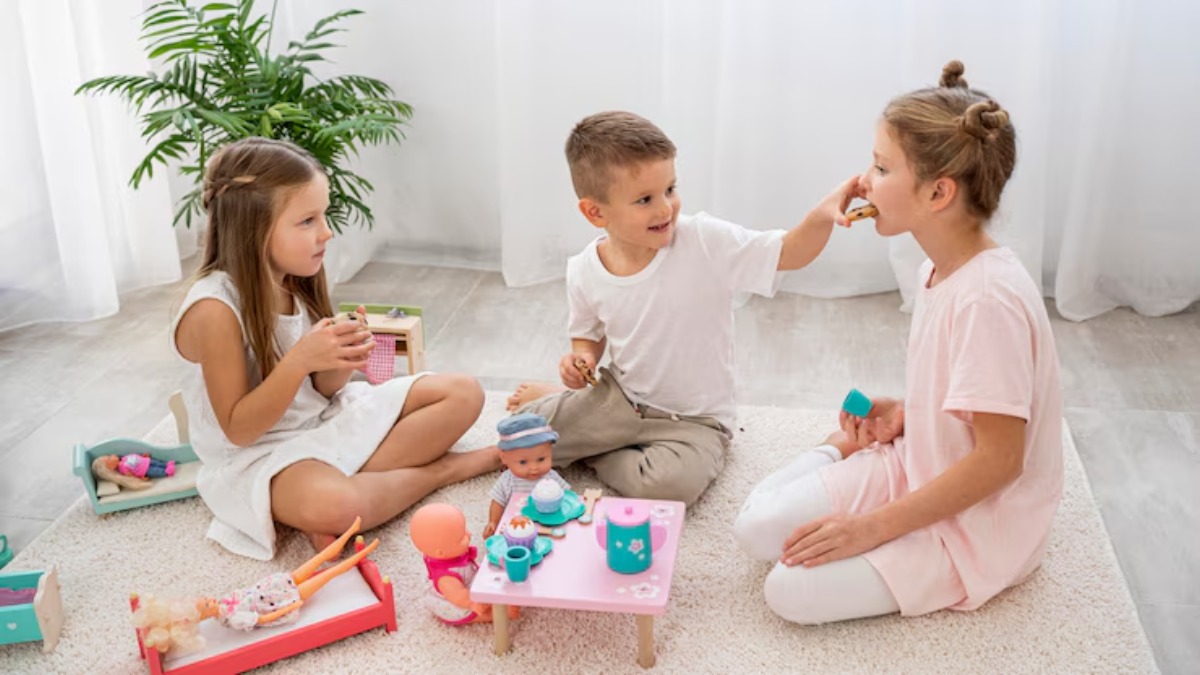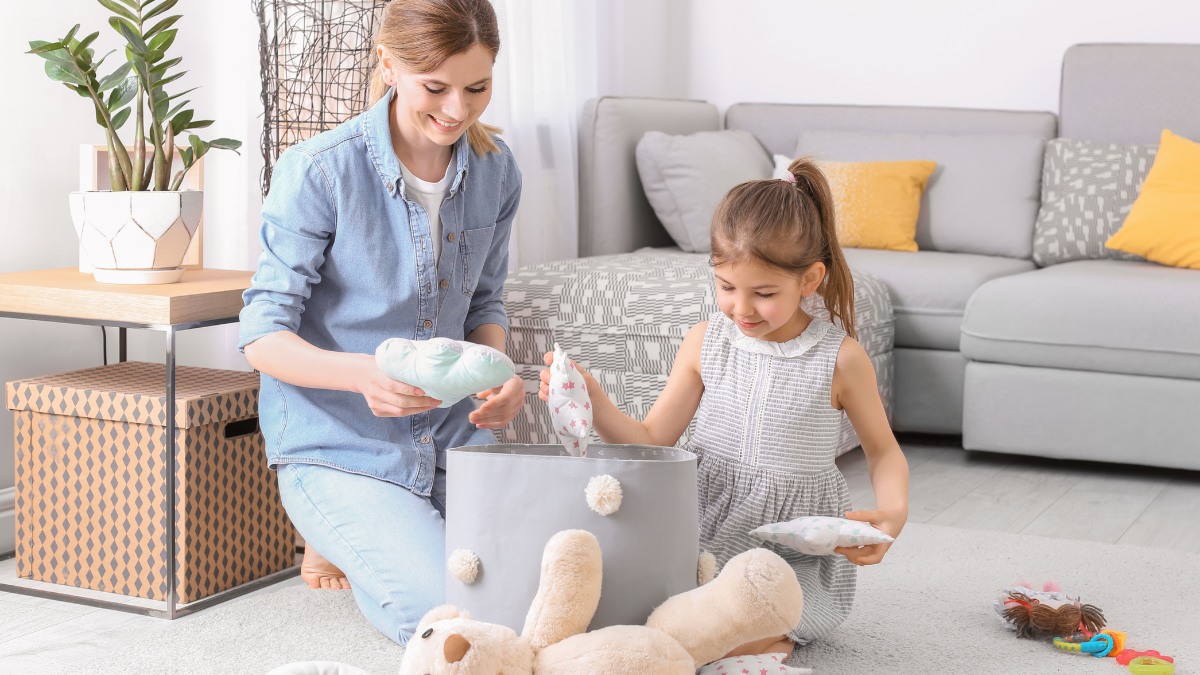7 DIR Floortime Techniques for Managing Aggression
July 30, 2025
Managing aggression through developmental strategies—discover how DIR Floortime promotes emotional regulation and builds safe, responsive communication.

Key Points:
- Managing aggression through developmental strategies requires joining the child’s emotional world and understanding the root cause of their behavior.
- DIR Floortime techniques promote co-regulation, emotional connection, and flexible thinking in aggressive children.
- Practical strategies like affective attunement, sensory integration, and symbolic play help build self-regulation from the ground up.
Aggressive behaviors in children with developmental differences are often misunderstood. Instead of being intentional acts of defiance, these behaviors frequently signal that a child is overwhelmed—emotionally, sensorily, or cognitively. DIR Floortime doesn’t suppress aggression through external control. Instead, it explores the child’s developmental gaps and uses connection and play to help them build the missing capacities they need to manage big emotions.
With that in mind, the following techniques offer a comprehensive look at how managing aggression through developmental strategies works in real-life settings.
Can DIR Floortime Help in Managing Aggression Through Developmental Strategies?
Yes, DIR Floortime can help in managing aggression through developmental strategies. It works by addressing the emotional and sensory needs behind aggressive behavior rather than focusing solely on stopping the behavior itself. Through relationship-based play, caregivers support the child in developing regulation, emotional expression, and problem-solving.
Managing aggression in children through DIR Floortime isn’t about controlling behavior—it’s about understanding the deeper needs beneath it. The following practices demonstrate how developmental strategies can guide both the adult and child toward greater emotional regulation, connection, and resilience. Each approach is grounded in empathy, play, and co-regulation, offering practical ways to meet aggression not with punishment, but with curiosity and support. Let’s explore how these techniques come to life.
1. Use Co-Regulation to Model Calm Responses
In DIR Floortime, co-regulation is a foundational practice. Rather than trying to stop a child’s aggression immediately, we first aim to help them feel emotionally safe. This requires adults to stay calm, connected, and emotionally present, even when the child is dysregulated.
A child showing aggression—whether it’s hitting, throwing, or yelling—is often functioning from their brain’s survival mode. In this state, language is not effective. What they need instead is a regulated adult who can model calmness and provide a “regulatory anchor.”
This looks like:
- Softening your voice and facial expressions.
- Sitting down low, at the child’s level.
- Matching their affect just slightly, then bringing it down.
- Narrating the moment with empathy: “You’re really mad. It’s too much right now.”
When this is done consistently, the child begins to borrow regulation from the adult and eventually internalizes it. That’s managing aggression through developmental strategies in action—not a quick fix, but a long-term developmental solution.
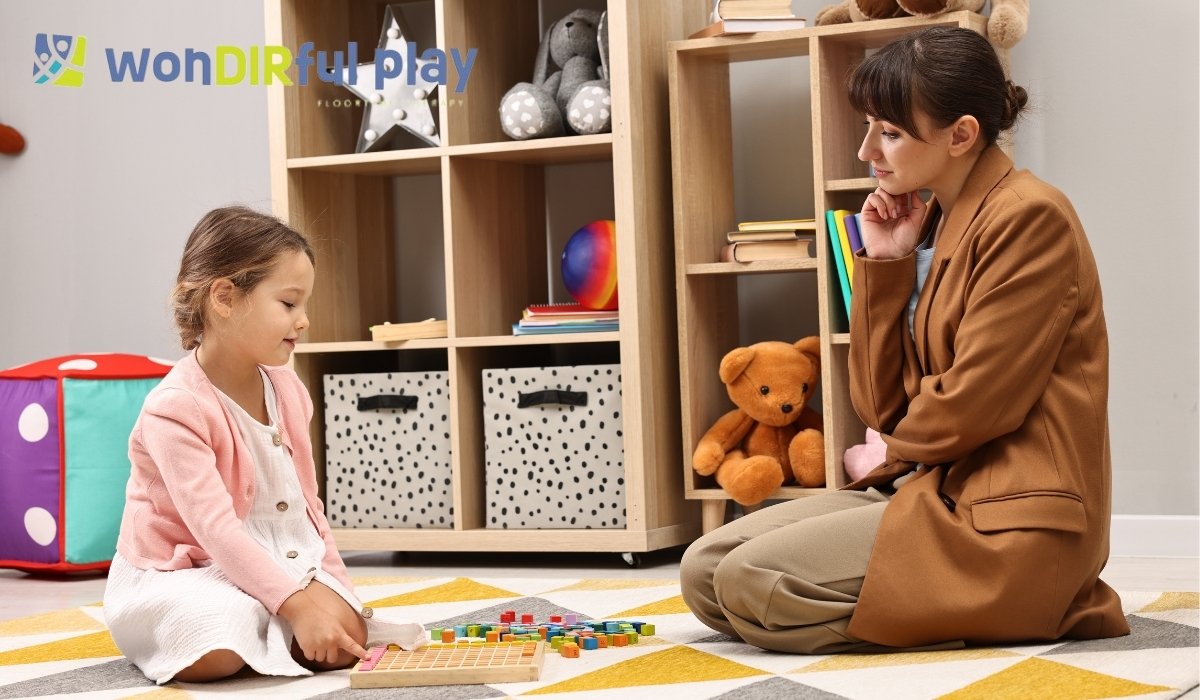
2. Recognize and Address Underlying Sensory Triggers
Children with aggression often experience underlying sensory processing challenges. A loud room, a tight shirt, or even the smell of lunch can send their nervous systems into overdrive.
DIR Floortime encourages adults to observe and interpret these triggers through the lens of the child’s sensory profile. Instead of reacting to the aggression, we investigate its roots.
Here’s how to implement this strategy:
- Track patterns. Keep a sensory diary noting when aggression occurs.
- Offer sensory supports. Weighted vests, chewing tools, or sensory breaks can reduce overwhelm.
- Adapt the environment. Dim lights, use noise-canceling headphones, or reduce visual clutter.
By tuning into the sensory needs of the child, we reduce the frequency of emotional flooding. That’s a key principle of managing aggression through developmental strategies—preventing the trigger instead of punishing the response.
3. Follow the Child’s Lead to Reduce Power Struggles
A child who is constantly being told what to do—especially if they struggle with transitions or flexibility—may begin to act out. DIR Floortime reduces this friction by following the child’s lead, particularly in play.
This doesn’t mean letting the child do whatever they want. It means joining their world to create trust and connection. Through this shared space, we gradually introduce developmental challenges that stretch their tolerance and thinking.
This technique works by:
- Observing what the child is interested in (e.g., lining up cars).
- Joining the activity without changing it immediately.
- Slowly adding ideas: “This car is so fast! Can it race the other one?”
- Building symbolic play: “Oh no, there’s traffic! What do we do?”
When a child feels seen and safe, they’re less likely to react with aggression. They’re in a better place to tolerate challenges—and eventually manage frustration constructively. This collaborative process is central to managing aggression through developmental strategies.
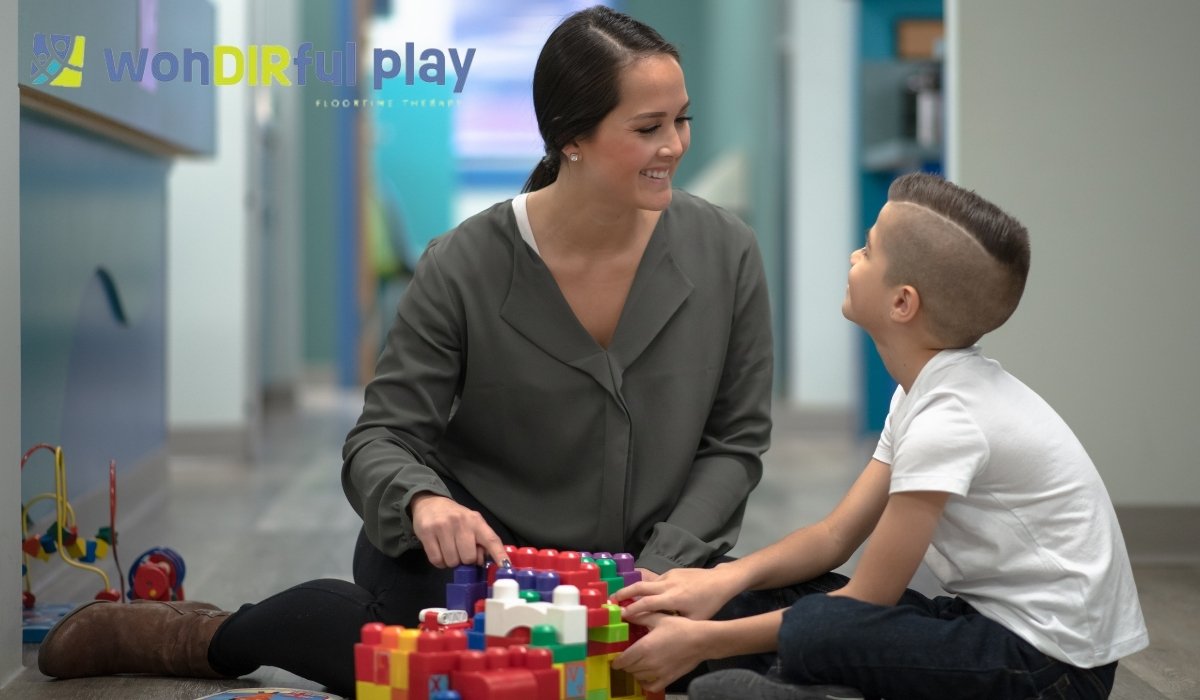
4. Use Affective Attunement to Support Emotional Expression
Aggressive behaviors often stem from emotional overload or unmet emotional needs. Affective attunement helps the adult recognize the child’s emotional signals and mirror them with empathy—without escalating the situation.
Instead of correcting behavior, the focus is on naming emotions and reflecting them back:
- “You’re mad because the toy broke.”
- “That was really frustrating when it didn’t go your way.”
- “You feel out of control right now.”
Through this affective dialogue, the child begins to link feelings to words and then to actions. Over time, this capacity for emotional identification and expression replaces impulsive or explosive reactions.
Affective attunement builds a bridge between the child’s inner world and external regulation, which is exactly what managing aggression through developmental strategies is designed to do.
5. Build Flexibility Through Playful Problem-Solving
Aggression can often arise from rigid thinking or difficulty handling unexpected changes. A child who can’t tolerate things not going their way may lash out as a coping mechanism.
DIR Floortime targets this by embedding problem-solving opportunities into play. The key is to introduce small, playful challenges that promote flexibility in a safe context.
For example:
- If a child is pretending a toy bus is going to school, you might say, “Oh no! The road is blocked. What should we do?”
- Introduce mild frustrations with a playful tone, like a puzzle piece that won’t fit.
- Use puppets or characters to model emotional flexibility: “Tiger is mad it’s raining! What can we do to help him feel better?”
These mini-conflicts build emotional resilience and creative thinking, equipping the child with alternatives to aggression. Over time, this approach strengthens the foundations of emotional regulation, which is the heart of managing aggression through developmental strategies.
6. Support Symbolic Play to Process Aggression Safely
Symbolic play—pretend scenarios with characters or objects—gives children a safe outlet to express big emotions like anger or fear. Instead of acting out physically, they can externalize feelings through play, which fosters reflection and emotional mastery.
Here’s how this works in practice:
- Offer figures or stuffed animals and invite stories: “This dinosaur is stomping so hard—what’s going on?”
- Model themes of frustration or conflict: “Bear wanted the last cookie, but Bunny got it first. Now he’s mad.”
- Help the child create a resolution: “Bear took deep breaths and asked nicely.”
This technique builds emotional literacy and executive function, while also reinforcing empathy. Children who play out anger symbolically are less likely to act it out physically. In DIR Floortime, symbolic play is not just a creative outlet—it’s a critical tool for managing aggression through developmental strategies.
7. Reflect on Ruptures and Repair to Strengthen Connection
No intervention is perfect. There will be moments when aggression erupts and regulation breaks down. What matters most is what happens after—how adults guide the child through reflection and repair.
In DIR Floortime, rupture and repair is not just damage control; it’s a learning opportunity. These moments teach children that relationships are safe, repairable, and resilient.
Here’s how to guide the repair process:
- After the child is calm, revisit the incident with compassion.
- Use simple language: “You were really upset earlier when we had to clean up.”
- Model accountability and forgiveness: “I got frustrated too. Let’s try again together.”
This practice reinforces trust, emotional growth, and the capacity to repair social connections—all essential pieces of managing aggression through developmental strategies. It shows children that even in conflict, they are safe and valued.
Get Compassionate DIR Floortime Support in New Jersey
If your child struggles with aggression, what they truly need is not control but connection. At WonDIRfulPlay, we specialize in managing aggression through developmental strategies using the DIR Floortime model. Our team helps children and families build emotional regulation, flexible thinking, and meaningful relationships through attuned, individualized interventions.
We offer DIR Floortime services in New Jersey, tailored to support your child’s unique developmental needs. Whether you're just beginning your journey or looking for more structured guidance, we’re here to help foster lasting emotional growth through evidence-informed strategies rooted in play and connection.
Reach out to us today and take the next step toward helping your child thrive through DIR Floortime.
Recent articles





-ink.jpeg)
-ink.jpeg)
-ink.jpeg)
-ink.jpeg)
-ink.jpeg)
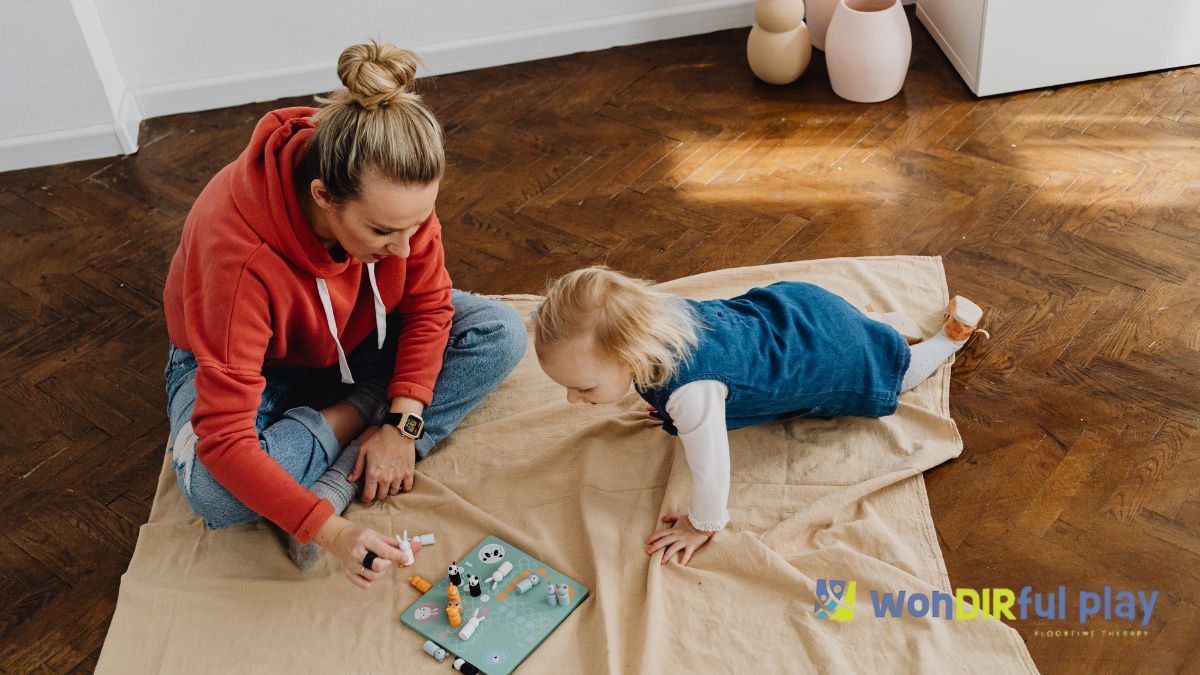
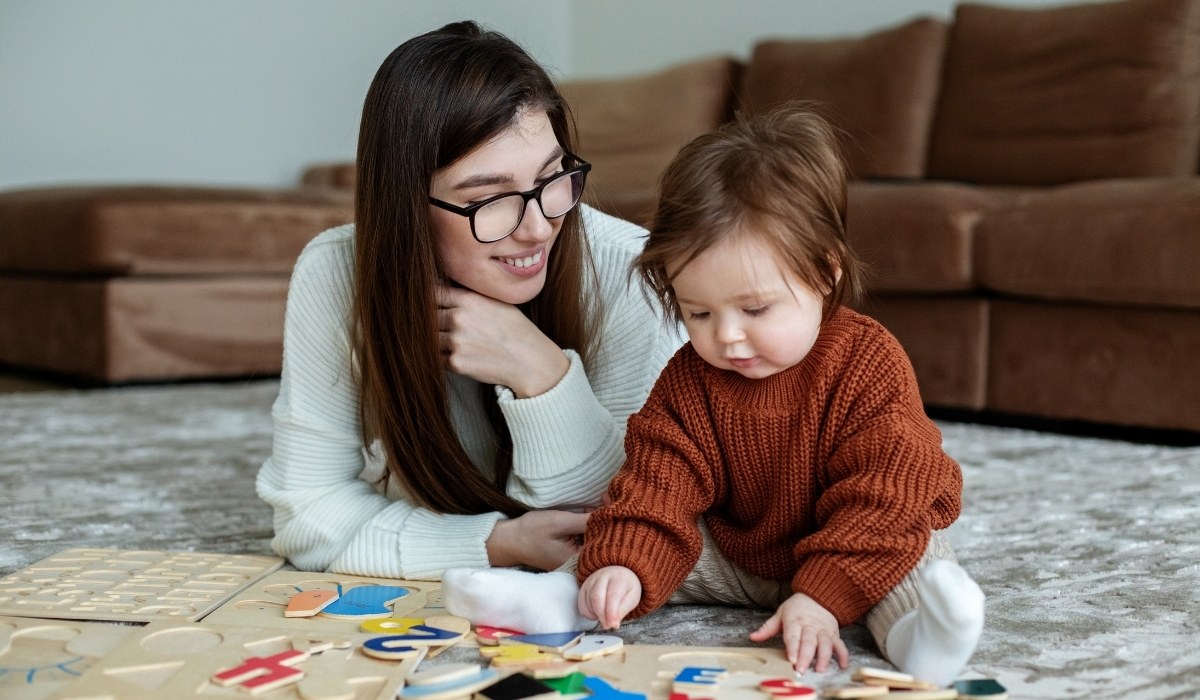
-ink.jpg)
-ink.jpeg)

-ink.jpeg)
-ink.jpeg)
-ink.jpeg)

